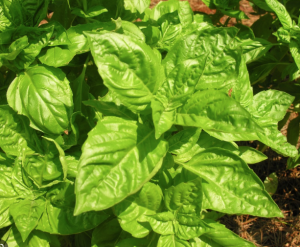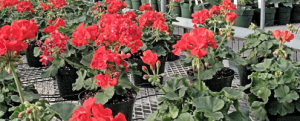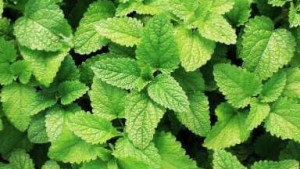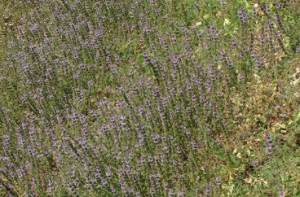Anyone that has been stung by a wasp knows one thing – they HURT! Not only do their stings hurt, but they can also pose significant risks.
Wasps have a stinger and powerful venom that can cause adverse reactions in humans, such as intense local pain, swelling, and even anaphylaxis. Although most isolated stings seldom result in a severe reaction, approximately one in ten people that are stung more than two times become allergic and might experience reactions to stings in the future.
Unlike a bee sting which typically subsides quickly, a wasp sting can hurt for a long time after it happens.
Further compounding their danger is the fact that wasps often live in large colonies and could attack en masse if disturbed or provoked. There is nothing worse than getting attacked by a swarm of wasps when you’re out enjoying nature!
If you want to keep wasps away from you and your home, there are a few plants that are a big no-no to wasps. Pungent smells tend to keep them away, and if you want to keep your home wasp-free, you can try planting some of these plants!
Wasp-Repelling Plants
Basil
Basil, from the mint family Lamiaceae, is an incredibly popular and easy-to-grow herb that adds a unique and tasty flavor to many dishes. Not only does it make an excellent (and free!) addition to your dishes, but the strong smell also repels wasps.
Basil has large, lush, vibrant green leaves that make it look like an edible version of a tropical rainforest. Each leaf looks like it’s been delicately handcrafted and can sometimes even appear to be two-tone in color with some variation between the top and bottom of each leaf.
Furthermore, the dark green stems give the plant a more sophisticated look. Unlike other herbs, basil has a large size that makes it stand out among its peers in any garden or kitchen. In addition, basil is one of the few pet-safe plants, so if your dog manages to chomp on a few leaves, no fuss, no muss.
This plant likes excessive heat and should be grown outdoors and will do well with six to eight hours of full sun exposure daily. However, you’ll need to keep the soil aerated and well-drained to keep root rot away.
Basil plants are easy to care for and are typically resistant to pests and diseases. Because of its low maintenance needs, growing basil is especially ideal for novice gardeners looking for a simple yet rewarding gardening experience. Harvest your plant often, as the basil leaves will start losing flavor and the plant will stop growing if it starts to flower.
An added benefit of using basil — they are an organic way to repel mosquitoes, too.
Geraniums
Geraniums are from the family Geraniaceae and are native to subtropical Africa. This desirable flower releases a pungent odor that wards off the pesky intruders without any help from us. In addition, if you grow outdoors, rabbits and deer that might wreak havoc on your garden might also stay away because of the geraniums.
Geraniums are known for their beautiful and vibrant colors, which can range from deep red and magenta to yellow, white, pink, and bright violet. Aside from the color of their flowers though, what makes geraniums so special is the shape of their blooms.
Geraniums are instantly recognizable by their large petals with prominent veining radiating out from the center of each flower like spikes on a crown. This unique quality enhances their beauty greatly, as does their sweet scent that wafts through gardens during sunny days.
They also don’t take up much room because of their neat mounding habit, so you can fit more into your space than some other plants. Geraniums love the sun so grow them outdoors if you can. They need moist, but well-drained soil to flourish.
Note that some species of geraniums can be toxic to pets, so you might want to limit access to certain sections of the garden if you choose to grow them.
Mint
Plants from the mint family (Lamiaceae) have special properties that make it the perfect way to keep these pests away. It turns out that certain compounds contained in the mint act as a natural repellent to them. Mint oil can also act as an irritant to these insects, further reinforcing the aversion. Specifically, menthol and cineole are the two main components that are toxic to wasps and keep them away. 
Many people make use of this property by strategically planting mint near wasp-prone areas in their gardens or mixing up some homemade minty solutions for trouble spots where wasps have been known to appear.
Mint is a vibrant-hued herb filled with flavor that is used to garnish dishes, make drinks and impart a sweet aroma in deserts. Fresh leaves are small and grow close together with an oval shape much like a heart, giving them an appealingly distinct look in the garden. The color takes on shades of either bright green or slightly purple depending on the variety and its stage of growth.
Whether you are an experienced gardener or just getting started, mint is one of the easiest herbs to grow. It’s tolerant to a variety of weather conditions, grows quickly, and reproduces vigorously.
Mint also doesn’t need to be pruned or weeded very often; just give it some sunlight and a bit of soil, and you’ll have yourself a flourishing mint patch in no time. In addition, most mint plants are considered pet-safe and non-toxic, a big plus for those of us who want dog-friendly bug control solutions.
Eucalyptus
Go to any store and look at the natural wasp repellents or organic bug control section, and you will see eucalyptus-based products. There are a few reasons why wasps and other insects have a natural aversion to eucalyptus.
Firstly, this could be due to the volatile oils within eucalyptus leaves, which act as a kind of insect repellent. 
Eucalyptus oil is known for having pest-repelling qualities and has even been used as an ingredient in some home cleaners and DIY insecticides. Note that eucalyptus oil is toxic to animals, so be careful with its use around pets!
Secondly, the scent of refreshing eucalyptus leaves, like many other plants with strong scents, works as a deterrent to wasps and other bugs.
Eucalyptus plants and trees are all from the family Myrtaceae and can vary widely in size from small shrubs to tall trees depending on the genus. The leaves of the plant tend to be quite round and be covered with a coating that is glossy and looks as if it has been polished. They usually range in color from olive green to bluish-gray and they provide excellent shade against hot summer days.
Eucalyptus loves the sun and is best grown outdoors, but it is possible to grow small varieties indoors as well. These plants can be sensitive to how much water they get and when – too much water and the roots can rot, but not enough and their leaves will dry out.
Pennyroyal
Mentha pulegium, otherwise known as Pennyroyal, is a member of the mint family. Many gardeners are familiar with the fragrant minty aroma of pennyroyal and its ability to repel wasps. This natural remedy has been used by people for hundreds of years to discourage these stinging insects from entering their gardens.
It turns out there is a scientific reason behind this age-old strategy – certain compounds found in pennyroyal, called pulegone and menthol, act as an insect repellent. Insects do not like the smell of these compounds and they use it as an indicator to avoid nesting areas near it.
Pennyroyal grows to a height between four and twelve inches, with small purple flowers blooming among its oval-shaped green leaves. Its distinct aroma has been used for centuries in many perfumes and herbal remedies.
If you’re looking for an attractive flower to add to your garden, pennyroyal might be just the thing. It has a long blooming period from June through October and can be propagated via seed or stem cuttings. Just remember it needs plenty of sunlight and should not be exposed to drought.
Be careful, if pennyroyal is orally consumed, the plant is highly toxic if enough is consumed. If you have dogs or pets at home, you might want to give this plant a pass, or at least plant it out-of-reach for your pets.
Do Wasps Pollinate?
Given that wasps hang around plants just like bees do, it begs the question from many of “Do wasps pollinate?” Yes, wasps pollinate, but to a lesser degree than bees.
Bees are made for pollinating, as pollen sticks to a bee’s hair like velcro, and they actually are constructed for pollen storage allowing bees to transport pollen for a long distance. Wasps don’t have these features, so their pollination is really more about carrying whatever residual pollen happens to be on their body.
On the positive side, wasps are typically willing to go to almost any plant — except for the ones listed above!






